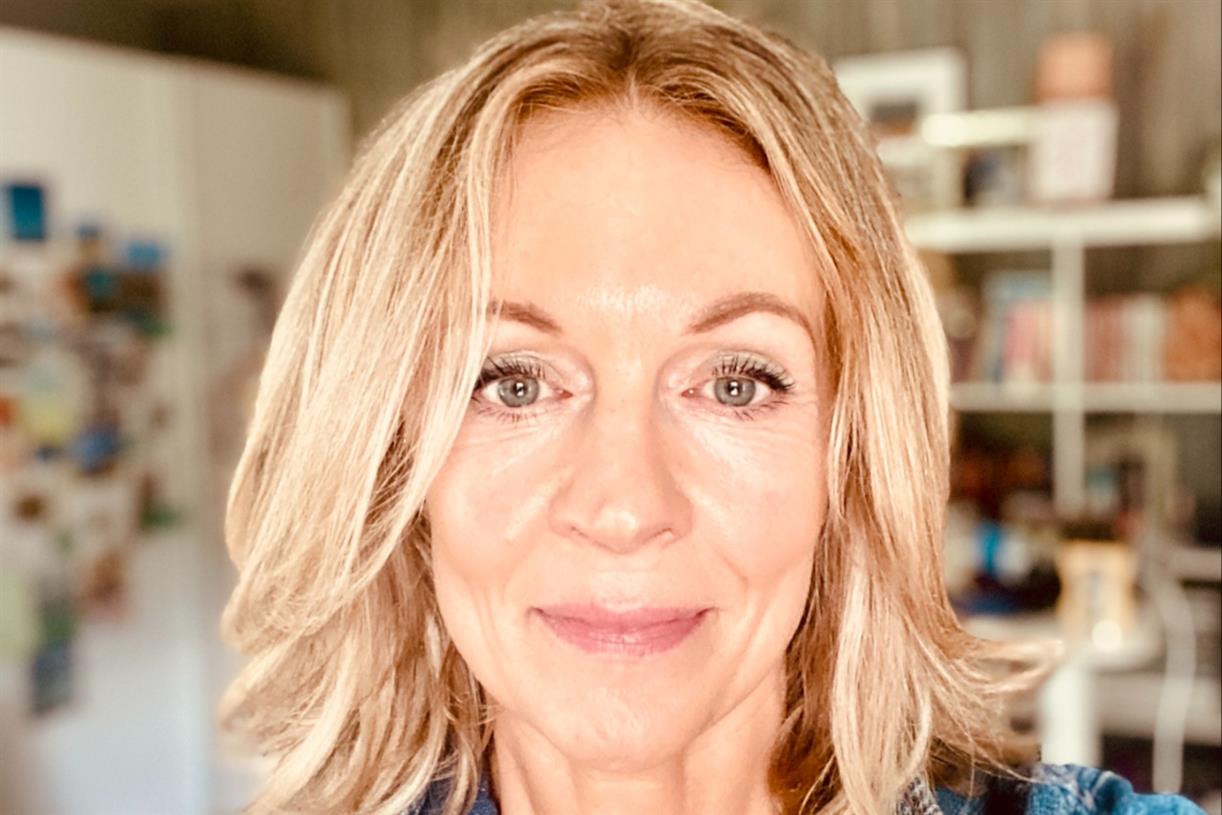Celebrating International Women’s Day: 10 Meditations by Powerful Women
We gathered 10 of the most popular women-led mindfulness practices led by the powerful women of the mindfulness movement. The post Celebrating International Women’s Day: 10 Meditations by Powerful Women appeared first on Mindful.

In celebration of International Women’s Day, in this article, we shine a light on a small fraction of the women who are making the world a better place by sharing their deep wisdom and their mindfulness practice. Here are 10 of the most popular episodes of our podcast, 12 Minute Meditation, that are led by women.
In this practice, we will hold our attention on five affirmations that can help us be more compassionate toward ourselves. Try doing this in moments when you feel overwhelmed—breathing in, “I do my best,” breathing out, “I let go of the rest.” You can do it right before you go to sleep at night. You did your best, you let go of the rest. Tomorrow is a new day.
Guided Meditation
Sit and find your breath. Sitting in an upright relaxed position, please drop your gaze or close your eyes. Find the breath, the faithful friend that it is, and notice that you are breathing. Take a deep breath in, and out. Take three deep breaths. Breathing in, breathing out. Breathing in positivity, breathing out and letting go of old stale air and stale stories. Breathing in, breathing out. Sitting with our attention on the breath. Relax the body, drop your shoulders, and be still. Repeat these affirmations to yourself, taking a deep breath at the end of each sentence. I am a human being full of life and possibility. No one else is like me. I have a right to make mistakes and recover. I love myself unconditionally. I do not need anyone else’s approval to love and be kind to myself. Sometimes I do not know. It is OK not to know. What is not known is an invitation to be curious and to discover. I do my best. I let go of the rest. Return your attention to the breath. If your mind wanders off, come back to the home base of the breath. Gently and easily, on the next breath, open your eyes and return your attention to the space.The 4-7-8 breath was introduced originally by Dr. Andrew Weil who was really considered the grandfather of integrative medicine and as a pulmonologist who’s also a current University of Arizona Integrative Medicine Fellowship fellow. The 4-7-8 breath can be used for situations when you’re feeling particularly anxious, stressed, and even if you have some difficulty falling asleep.
The 4-7-8 breath stands for the following: You inhale for a count of four, then you hold your breath for a count of seven, and then you exhale through your mouth through pursed lips for a count of eight. The durations of these breaths aren’t as important as the ratio of the inhalation breath, breath-hold, and particularly the exhalation breath. The exhalation breath, you’ll notice, is twice as long as the inhalation breath. This allows for the lungs to completely empty of stagnant air, and oftentimes people who have chronic lung disease, particularly those with obstructive lung disease, have a tendency to air trap. This 4-7-8 breathing meditation offers the opportunity to completely exhale.
The 4-7-8 breath can be used for situations when you’re feeling particularly anxious, stressed, and even if you have some difficulty falling asleep.
Ni-Cheng LiangIt’s also a much more intentional practice. If, for instance, awareness of breath might be anxiety-provoking, then perhaps a 4-7-8 breath would be more helpful. Pursing your lips when you exhale has been shown to basically stent open the airways. This type of breathing also activates your vagus nerve, which is your “rest and digest” nerve.
Guided Meditation:
Sit or stand in a position of comfort. You can close your eyes if that feels safe for you to do so or lower your gaze a few inches in front of you. Perhaps sit more upright, envisioning this string that’s pulling the crown of the head upwards toward the sky, running down through the spine. Checking in and making sure that the head is atop shoulders that are atop the hips. This allows your lungs to be in better anatomic alignment to maximize their ability to exchange air. We’ll exhale out through the mouth and then to start, you’ll inhale through your nose for a count of four. One, two, three, four. Hold the breath, two, three, four, five, six, seven. And then out through your mouth, through pursed lips, two, three, four, five, six, seven, eight. We’ll do that three more times. Exhale once again, and then inhale through the nose. Hold your breath. Then exhale through your mouth. Inhale into the nose. Hold the breath. And exhale through your mouth. One more time, inhale through the nose. Hold the breath. And exhale through the mouth. And then return to a normal rhythm of breathing. Perhaps checking in and noticing how you feel now compared to just a few breath cycles ago. Notice the body sensations now. Notice any emotions. Notice your sense of being right now in this moment after the 4-7-8 breath.The recommended number of times to do this type of breathing meditation is going through four breath cycles up to twice a day initially. Sometimes, if you do more than that, it can cause some lightheadedness and dizziness. If that should happen, you can definitely decrease the number of breath cycles you do with the 4-7-8 breath and slowly build up. But perhaps this is a breathing technique that you might want to try before you do your daily mindfulness practice. Incorporating an intentional, mindful type of breathing before your formal practice. The invitation is there, the choice is yours.
We tend to focus all our love on the people we care about—yet, to connect more deeply with others, we must turn toward the one person we keep on the shortest leash: ourselves. We often reject other people’s care or attention when we believe we don’t deserve it. This compassion practice reminds us that there’s nothing special we must do to deserve love. You are worthy of love simply because you exist.
Guided Meditation:
Imagine you’re encircled by people who love you. Sit comfortably, eyes open or closed, and imagine yourself in the center of a circle made up of the most loving beings you’ve met. There may be some people in your circle who you’ve never met but have been inspired by. Maybe they exist now or they’ve existed historically, or even mythically. Receive the love of those who love you. Experience yourself as the recipient of the energy, attention, care, and regard of all of these beings in your circle of love. Silently repeat whatever phrases are expressive of that which you most wish for yourself, not just for today but in an enduring way. Phrases that are big and open, something like: May I be safe, be happy, be healthy. Live with ease of heart. May I be safe, be happy, be healthy. Live with ease of heart. Notice how you feel when you receive love. As you experience yourself in the center of the circle, all kinds of different emotions may arise. You may feel gratitude and awe, or you might feel kind of shy, like you would rather duck down and have all of these beings send loving-kindness to one another and forget about you. Whatever emotion may arise, you just let it wash through you. Your touchstone is those phrases—May I be happy. May I be peaceful… or whatever phrases you’ve chosen. Open yourself up to receiving love. Imagine that your skin is porous and this warm, loving energy is coming in. Imagine yourself receiving. There’s nothing special that you need to do to deserve this kind of acknowledgement or care. It’s simply because you exist. Send loving care to the people in your circle. You can allow that quality of loving-kindness and compassion and care you feel coming toward you to flow right back out to the circle and then toward all beings everywhere, so that what you receive, you transform into giving. You give the quality of care and kindness that does actually exist in this world. That can become part of you, and part of what you express or return. When you feel ready you can open your eyes or lift your gaze to end the session.When we’re under pressure, our ability to care and to lead can feel compromised. Mindfulness can provide a path to cultivate the focus and determination of grit and the care and calm of grace, to learn from growth and change. In this practice to arrive, breathe, and connect, Dr. Lili Powell, a professor at UVA Darden School of Business, offers space to fully arrive in the present moment and make a commitment to focusing on being right here, right now.
Guided Meditation:
Get into what for you is an alert yet relaxed position. You may need to adjust your posture a bit to settle into your chair. Put your feet flat on the floor, put your bottom way back in the seat of your chair, and then sit up nice and tall. You can relax your hands, placing the palms down on top of your thighs. And then very slowly lower your gaze or, if you feel comfortable, close your eyes. Take a moment to fully arrive in the present moment. You may be at work or doing something else right now, so I invite you to take a moment to put that aside. Of course, if you’re driving, it might be nice to pull over for a little bit. In any case, just take this moment to fully arrive, giving yourself the gift of a moment of focus and clarity. Letting go of your to-do list. Letting go of whatever comes next. You’re making a clear-eyed commitment to be right here, right now. Scan through your own body, checking in and feeling the temperature, so to speak. And you may note whether you feel especially grounded right now, perhaps ungrounded or underground. You don’t have to change anything about that right now, just simply notice. Now shift your attention inward to your body breathing. Notice inhalations and exhalations wherever they feel most prominent to you. You may feel this most at the tip of your nostrils, where cool air enters the nose and warm breath leaves the mouth. Or you may feel a whole breath that travels from your nose to your throat, into your chest, and down into your belly. Connect to a few physical sensations. Notice the ones that we can associate with the kinds of energies that we want to work with when showing up with grit and grace. So with your mind’s eye, begin to trace your spine from the tailbone up through the lower back, upper back, back of the neck, and into the crown of the head. And with this, feel the length of your spine. You may even feel as though you’re growing slightly, offering a little more space between the vertebrae and the spine. Allow your head to sit in a balanced way atop of the spine. As you feel into the length of your spine, note the way that this feels like dignity; a grounded and balanced posture. And then bring your mind’s eye to your back and notice the width of your back. Notice the space from one shoulder to the other, from one underarm to the other. You may even breathe more deeply into the back of the rib cage to access this area. And with your width, feel into your strength. Associating this expanse of the body with strength and grit, focus, and determination. Now, shift your attention to the front of the chest, right at the breastbone. Your mind’s eye may at first see just a small spot. See if you can focus on the space around that spot; taking in the whole chest. Feel into your heart beating below the breastbone and feel into your warmth. Feel into the energy that is calm and caring and inviting. And, let’s call that your grace. Once again, notice the length of your spine and the feeling of dignity. Notice the breadth of your back, your strength, and your grit. Notice the warmth in the front of your chest, the heart, and your grace. And allow these three sensations to be in conversation with one another: Dignity, Grit, Grace. Take a few deep breaths. Bring a few small movements back to your fingers and toes. If your eyes have been closed, open them. If your eyes have been lowered, you may begin to raise your gaze.Mindfulness meditation involves a willingness to be with ourselves as we are. It offers a way of learning to work with ourselves, and not on ourselves, especially if you are healing from perfectionism. We can start to notice whatever is happening within us and around us with curiosity and kindness. Cheryl Jones is a certified Mindfulness-Based Stress Reduction instructor and author who provides mindfulness training to businesses, organizations, retreat centers, and more.
Guided Meditation:
Find your way to an upright and dignified posture. Close your eyes or lower your eyes in a soft gaze. Place your feet on the ground and relax your arms at your sides. Rest your hands in your lap. Draw your shoulder blades subtly toward each other, allowing the chin to be parallel with the floor. Lift the crown of your head toward the sky. Perhaps soften the belly and the jaw. Notice what it feels like to stop. Notice what it feels like to be sitting in this purposeful posture in this moment, in this space. And perhaps now take a moment to welcome yourself to your practice, acknowledging your willingness to be here for yourself in this way. Notice that you are breathing. There’s no need to change or manipulate the breath in any way. Allow the breath to be just as it is right here, right now. Simply follow the breath in and follow the breath out. Notice where you feel the sensations of the breath. Perhaps you’re aware of the air moving in and out at the nostrils and the upper lip. You could possibly be sensing the gentle expanding and contracting of the chest and ribs. Maybe you feel the abdomen rising and sinking. Allow your attention to rest on the sensations of the breath as it flows in and out of the body. As you’re sitting here with the attention on the breath, you may notice thoughts going through the mind. There’s no need to block thoughts out. Rather, see if it is possible to allow thoughts to pass through the mind one by one. Let go of any need to label thoughts as positive or negative. Good or bad. Find a neutral way to be with your thoughts. See if it’s possible to be aware of thoughts without grasping or clinging to any one thought. And also without rejecting or denying any particular thought. Shift your attention now to any feelings that may be present in this moment. Breathing in and breathing out. Acknowledge any feeling just as it is. Sometimes we have feelings about our feelings. We may feel that one feeling is OK or acceptable while another is not. All feelings are acceptable. Now, bring your awareness to sensations within the body. Warmth. Coolness. Tingling. Tightness. Pulsation. Relaxation. Hunger. Fullness. Notice what’s happening within the body in this moment. Do this with patience and kindness. Explore sensations both strong and subtle with curiosity. As you breathe in and breathe out, notice if your posture has shifted. And then make any adjustments, if you’d like. Allow yourself to tune in to the body just as it is. Center your attention on only the breath now. And as we near the end of this practice, follow three more full cycles of breathing. Be as present as possible for each one. Remember this place of awareness is always available to you because it’s within you. As you feel ready, allow your eyes to open gently if they were closed. Get reacquainted with your surroundings and prepare to reengage with the day. Perhaps set an intention to bring awareness to all that you do and into each interaction.This meditation is called Soften, Soothe, and Allow. It will take about 15 minutes to complete. It’s designed for dealing with really difficult, disturbing emotions, so if you’re feeling something very difficult right now, this may be a good meditation for you. If you are feeling peaceful and happy, you might want to choose another meditation.
Guided Meditation:
Be seated in a comfortable position, either on a chair or on a cushion. Make sure your back is upright yet relaxed, and that your head is relaxed as well, tilted slightly downward. Take a few deep breaths. Let out the tension that you’re experiencing right now. So in and out, three times. Let your breath return to normal, just noticing how your breath feels as it comes into and leaves your body. Notice where you feel the breath most strongly: Is it at your nostrils, your lungs, your abdomen? Think of the circumstance or situation that’s causing you a lot of emotional upset right now. It may be something you’re feeling about yourself, something you don’t like, or some mistake you’ve made. Or it could be just a situation that’s very difficult to deal with right now. Remind yourself of the details involved, and try not to get lost too much in a storyline, but just get in touch with what it is that’s troubling you and how you feel about it. Focusing your attention on the body, become aware of what emotions are attached to this painful circumstance. There’s probably more than one. So maybe just labeling them. Anger. Disappointment. Grief. Fear. What’s coming up for you right now? Choose the emotion that you feel most strongly. What’s the predominant difficult emotion associated with your circumstance? See if you can tell where you feel that emotion in your body. Is it a gripping in the throat, a heaviness behind the eyes? A clenching if your gut? See if you can notice what part of the body is physically manifesting the emotion most strongly. Describe these sensations to yourself. Tight. Hot. Tingling. Numb. Cold. Just describe it in your mind. Because this is by definition a painful emotion, we naturally want to resist it, to tighten up against it, to make it go away. But this just makes it all the more painful. Instead of resisting, Soften around the emotion. Be aware of the emotion in the body, and try to soften around it. See if you can relax a little bit of the feeling of tension or pressure. Just soften. If emotion is very intense, you may want to focus your awareness on the edges of the emotion. Just kind of soften around the boundaries or borders of the emotion. Imagine that you have maybe a pool of water that you’ve let down the side. It’s not so tightly contained, so the water can just kind of pour out naturally. Just softening around the sensation. Then, Soothe yourself gently. Recognize and validate how hard it is to be feeling this. Every single one of us constantly feels really difficult, painful emotions. And we need to be able to comfort ourselves for the pain of living this human life. So what I’d like you to do is take your hand, and just gently touch the place where you’re feeling the emotion. Let your touch be soft, caring. Maybe caress the spot a little bit. And as you gently touch that spot, try to soothe the difficult emotions. Tell yourself that you recognize how hard it is to feel this way. If it feels comfortable, you might even say something like, “Poor darling, I’m so sorry. It’s so hard for you right now.”. Next, Allow any feeling you may be experiencing. Remember that you are allowed to feel this. This is your natural reaction. You aren’t choosing to feel this; this is what’s happening. Just soothe and comfort yourself with the fact that this is hard right now, to be feeling this. Just allow the sensation of the emotion to be there. You’re safe right now at this moment. Notice if the sensation is changing at all. Is it moving or shifting or changing quality? For the next few minutes, if the same emotion is still very strong and predominant—or perhaps a new emotion is arising, that becomes more predominant—just continue locating the sensation in your body, softening around the edges of the sensation so there’s not so much tightness or constriction. Soothe yourself and your body, the difficulty of what you’re feeling right now, with lots of tender compassion. If your mind gets pulled away into thinking about the situation or circumstance, that’s okay. It’s only natural. Gently try to bring your awareness back to the actual sensations of the emotion in your body very tangibly. If any feelings of peace or comfort arise, see if you can be aware of and be with those emotions as well. And if it’s still very difficult, then stay with the pain with the three techniques of soften, soothe, and allow. If you feel your mind starting to drift or if you feel you’re starting to tune out again, just try to refresh in your mind the source of the pain and get in touch with the feelings in your body. Soften, soothe and allow. Now drop the focus on this particular emotion or sensation. Let your awareness fill your entire body, just feeling the entire pulsating, energetic sensation of your body, from head to toe. Just let your awareness rest in your physical presence. When you’re ready to end this practice, place your hand gently over your heart. Just get in touch with feelings of tenderness, kindness, concern, compassion for what you’re going through. Remember that we’re all imperfect, that life is imperfect. And that if we can open to that, we can be happy and peaceful, even in the face of suffering.This is a foundational awareness practice designed to help bring about three key insights: clarity of intention; understanding of our power, presence, and impact; and opportunities for wise action-taking. If we take a moment to consider how complex, volatile, and uncertain current societal conditions are, as well as the spectrum of emotions we are feeling individually and collectively, it is easy to feel a sense of overwhelm and confusion about how to engage with the world from a place of strength, groundedness, and calm.
In this practice, we will move through the four stages of human bridge-building. We’ll explore how we show up in each of the four transformation quadrants of self, family, community, and organizations. The breath we focus on is the normal flow of the in-and-out breath, allowing it to rest in its natural rhythm and cadence, as we meet what arises with self-compassion and curiosity.
Guided Meditation:
1. To begin, silently set an intention for yourself to be open and curious about what comes up, receiving what arises with equanimity. You may sit or stand comfortably, just allowing whichever position you choose to let you feel both alert and relaxed. Feel free to close your eyes or cast them in a softened downward gaze.
2. Next, let’s take three deep breaths in and out. Allowing your awareness to settle…your body to settle…and your breath to settle into its natural rhythm. Breathing in and out as we explore how we can build bridges with others to serve as agents of transformation.
Self
4. Next, see what you notice: perhaps the weight of your palm against your chest, or a temperature difference in the space underneath your palm, or maybe even the sensation of each heart beat as you expand your awareness. Taking it all in with a gentle inhale and exhale.
5. Over the next few moments, I invite you to consider these three things:
How did I show up in the world today? How did my privilege show up through me? What actions can I take to help become more aware of my privilege and its impact on others?3. First, let us bring our attention to our heart space by gently placing a hand over the heart, allowing it to simply rest there. Placing a hand over the heart can often bring us comfort when we explore difficult thoughts, emotions, or experiences.
We don’t have to know all the answers. We are simply inviting in reflection and introspection to allow insights and awareness of body and mind to arise. Whatever arises, see if you can meet it with self-compassion and curiosity.
Family
6. Taking three deep breaths in and out, let us bring our attention back to our breath. Allowing the mind and body to let go of the thoughts just reflected on for self-inquiry.
7. Now, let us consider the next quadrant of family. For many, family is where we learned our values, roles, and the lens through which we view life and others. With kindness and curiosity, I invite you to consider what key values you learned from your family and how they might impact your view of people who are not like you. If you like, you may continue to place your hand over your heart or return it to your heart to support you in reflection on ways your family experience has informed how you perceive the world. Focusing on the breath, notice any sensations in your body. Where are they? What do they feel like? If, at any time, this reflection becomes too difficult, please feel free to open your eyes or, if needed, pause or stop to honor self-care needs.
8. Bringing your attention back to the sensation of your breath. Perhaps noticing the sound of your breath or the sensation of the whole body breathing as you let go of thoughts and reflections of family. If any difficult emotions remain, you may want to curl, squeeze, and then uncurl and stretch your fingers, allowing any tension to release with each stretch.
9. Let us now turn our attention to community. Coming to awareness of privilege and the role of family in our perceptions of the world, we can now begin to see how we may be navigating the world and the quality of our presence in it…beginning with our communities. Next, let’s consider how we move through our communities.
With whom do you tend to interact in your community? And with whom do you not interact? Why?… Go deeper… Why?10. And now, for these next few moments, consider how you might show up differently in your community.
Organizations
11. Let’s bring our attention back to our breath as we let go of our thoughts about community. Breathing in and out. In and out.
12. In these last few moments, let us now turn our attention to the organizations in which (or with whom) we work. At this point, we may have gleaned some insights about our privilege, the nature and impact of our presence, and how our families have shaped how we interact with and perceive the world and people around us. Bringing this forward, let’s consider how these factors influence how we show up at work or with clients. See if you can notice where your lens of perception may need broadening or clarity. Is there a specific person or group of people that you hold with judgment and certainty? If so, bring them to mind and see if you can offer loving-kindness to help you shift from judgment and certainty to discernment, kindness, and curiosity.
What do you notice? What do you feel in your body? What stories or mental narratives arise when you think of this person or these people? What can you do differently to model and create a brave and safe space for all to flourish?Let us rest here for the next few moments in contemplation.
12. Taking three deep breaths in and out, letting go of thoughts and bringing your attention back to the sensation of your breath. As you close this meditation, I invite you to journal on what came up for you and what action steps you may wish to take.
This practice is based on the four stages of human bridge-building outlined in A Bridge To Better: An Open Letter To Humanity and Resource Guide.
Sometimes gratitude can be tough to tap into, so this is a meditation to help us connect with our own goodness. When we’re anchored in feelings of love and gratitude, we can bring loving-kindness and compassion with us out into the world.
Guided Meditation:
1. Start by taking a moment to listen to your body at this moment. Is there anything that you could adjust? Is there anything that you could soften or invite to soften? Do you soften your heart, your chest, your belly?
2. Allow yourself to surrender to gravity. Allow yourself to surrender and connect with the feeling of being supported. Feeling supported by the chair beneath you, or the ground underneath you. Even the earth, supporting you.
3. Bring your hand onto your body. You might bring it onto your chest, your heart or maybe somewhere else on your body. Let your hands be a kind of soothing, kind support as we continue to go through this practice.
4. Taking a few breaths, allow yourself to feel the support and kindness from just the touch of your own hand, and wish yourself well. It can be difficult to wish yourself well, so feel free to try a few different ways. You could take a moment to think of all the qualities you love about yourself, or you could think of someone who really loves you and sees your goodness. It could be a partner, a friend or even a pet. Take this moment and connect with your own goodness.
5. Take a moment and repeat phrases loving-kindness and self-compassion. You can try some of these phrases and see what resonates with you. May I be happy just as I am. May my body be healthy and strong. I love myself completely.
6. Repeat one word or phrase while remaining connected to your physical body and feel yourself soaking up these well wishes, washing every sell of your body with happiness and ease.
7. When yourself overflowing with these feelings of love and gratitude, you can begin to shift these feelings to someone else. Bring into mind someone in your life that makes it easy for you to love them. Wish for them to be well, to be happy and to be at ease.
8. As you end this meditative practice, take this feeling of loving-kindness and compassion with you as you go out into the world.
The idea of “don’t know mind” is sometimes used in meditation to evoke a sense of curiosity.
In this practice. we’ll explore what it is like to approach the world with a “don’t know mind.” How does that land in the body? This exploration of not knowing, of not being quite certain?
Guided Meditation:
I would like to invite you to come to a place that is truly comfortable and supportive to your practice. For some of you, this may mean a seated position on a chair, on a sofa, or even on some cushions on the floor. This might mean standing up, if that’s more supportive to your back and your posture. And for some of you, this may mean lying down on the ground. Please take a moment to come to whatever place is going to feel most compassionate to your body. Some of you may want to fully close your eyes for this meditation practice. And others may want to employ what I like to call a “soft gaze,” which is looking down at the ground about two inches in front of the knees or the feet. When you’ve settled into a comfortable position, I would love to invite you to take three deep breaths with me. As you’re taking those three deep breaths, you may notice that your body may begin to relax naturally. You may start to feel a little bit more deeply connected to whatever place makes contact with the earth. For some of you that’s going to be your feet, and for others that may be your back. Notice whatever place comes into contact with the earth in this moment. Begin to draw your attention and awareness to the connection between your body and the earth. It might feel beneficial at this point to take another deep inhale and exhale here. When you’re finished, return your breath back to a natural cadence and rhythm. You may notice the quality of the sound in the room that you’re in. Maybe there are some ambient noises that are coming from inside of wherever you are, whatever building you’re in. Or maybe there are sounds that are coming from outside. Please feel free to make these a part of your practice. Begin to draw your awareness to the bottoms of your feet, wherever they are landing on the earth. What do you notice? Does the right foot or the left foot feel slightly heavier than the other? As you notice the difference between the right and the left foot, perhaps you might also become aware of other micro-adjustments inside of your body. You may notice that the mind continues to produce thoughts, and that’s OK. The point of a meditation practice is not necessarily to stop thinking the thoughts that you are thinking, but rather to just be aware of the thoughts as they flow through the body and the mind. As you draw your awareness to your thoughts, you can also bring your awareness to the rhythm of your breath as it flows in and out of your body. I would like to invite you to bring your attention to the muscles of the belly and notice if they’ve been drawn in a little bit tightly towards the spine. Is it possible to invite a sense of relaxation, and even vulnerability, to the muscles of the belly by allowing them to be soft? Don’t worry, no one is watching. How does it feel when you invite a sense of softness and relaxation to the belly? How does the rest of the body respond? While your attention is here, you might begin to imagine a person, place, animal, or object that is deeply familiar to you. Perhaps this animal, person, place, or object reminds you of what it feels like to be home. Can you bring them into the room with you right now? Notice if that invitation has an impact on your breath, as it rises and falls from your chest. You might even feel a bit more safe in the space of this practice as you invite the image of what reminds you of being home, of being held. What is familiar to you, deeply familiar, about this person, animal, place, or object, that makes you feel as though you really know them? What is the feeling of knowing? What is the feeling of familiarity, and how does it land inside of the body? The invitation is to bring your attention back to the breath anytime that you notice yourself getting caught up in the story. Now, bring to mind an image of something that reminds you of what it means to be strong and resilient. Maybe there’s someone who you really look up to, or a place you’ve been that made you feel truly strong and resilient when you were there. Can you bring into your mind’s awareness the embodied sensations of being strong and resilient? Does your body make slight changes and shifts as you recall how this feels? Now we’re going to do a little bit of experimenting. Hopefully this will be fun. There’s a term called “don’t know mind” that is sometimes used in meditation to invoke a sense of curiosity. What is it like to approach the world with a “don’t know mind?” You may find that this is a bit of a contrast to the feeling of familiarity that we began to explore in the beginning of this practice. The feeling of familiarity is the feeling of, “Oh yes, I know. I know this person. I know this place. I know this animal or this object. They are deeply familiar to me.” Perhaps the way we view things, which are seemingly familiar to us, can begin to shift and change ever so slightly when we apply the pure curiosity of “don’t know mind.” How does that land in the body? This exploration of not knowing, of not being quite certain? At this point in your practice, you may notice if there are places in the body that begin to contract when we explore the feeling of “don’t know mind,” and that’s OK. This is the body’s intelligence. Can we unite this exploration of “don’t know mind” with those same sensations of strength and resilience, so that we know that no matter what, when we encounter moments of uncertainty and not-knowing that we have all the strength and resilience inside of our body to meet with that moment? What does it feel like to meet strength and resilience with not-knowing? Can we be truly curious about what arises in our awareness with this practice? Let’s take just a few moments in silence together now and explore the way that this feels. When you’re ready please bring your entire body into your mind’s eye and notice the difference between the way the body feels now and the way the body felt when you first entered into this space of practice. Take the time to notice the way the feet feel slightly different in the way they connect to the earth. Let’s all take one more deep breath in here. When you’re ready, at your own pace and rhythm, please begin to, ever so slowly and gently, open up the eyes, without staring at anything in particular. Allow color and texture to flood back into your mind’s awareness. From here we can begin the process of reorienting to the room that we’re in. Gently begin to turn and rotate the head and the neck, and take in the colors and textures of the space you are in. Notice if there’s anything new or different or alive in the space. What has changed since you started this practice?One morning in early October, I glanced at my cell phone and noticed the weather app ominously predicting many days of snow and icy temperatures ahead. Brrr! I could feel the chill of dark thoughts starting to gather. I could feel my body creak with cold and aging.
Life’s challenges were seemingly everywhere. And yet…I was smiling. I was cheerful. I was grateful. What? Was I crazy?
I made a general goal to cultivate more resilience around the ups and downs of life, so I made a point of tuning my awareness toward the appreciation of life’s small delights. I was curious about what I would discover if I focused intentionally on the things that I appreciated. That morning, as I let wakefulness peel the dark back, I could smell my neighbor’s coffee brewing. The snow outside gently buffered the sounds of the world. I could sense my husband’s warm weight in the bed. I took a long moment to enjoy the muted winter light edging in around the slats of the window blinds.
There was nothing particularly special going on, but I noticed that being grateful for little things was already lifting my dark thoughts.
Elaine SmooklerThere was nothing particularly special going on, but I noticed that being grateful for little things was already lifting my dark thoughts. Difficulties were still present, but awareness of my gratitude was shifting my view, letting me see that everything was not dark and cold—in fact, many sights and sounds were quite lovely.
Would you like to join me in a gratitude practice?

 ValVades
ValVades 
































